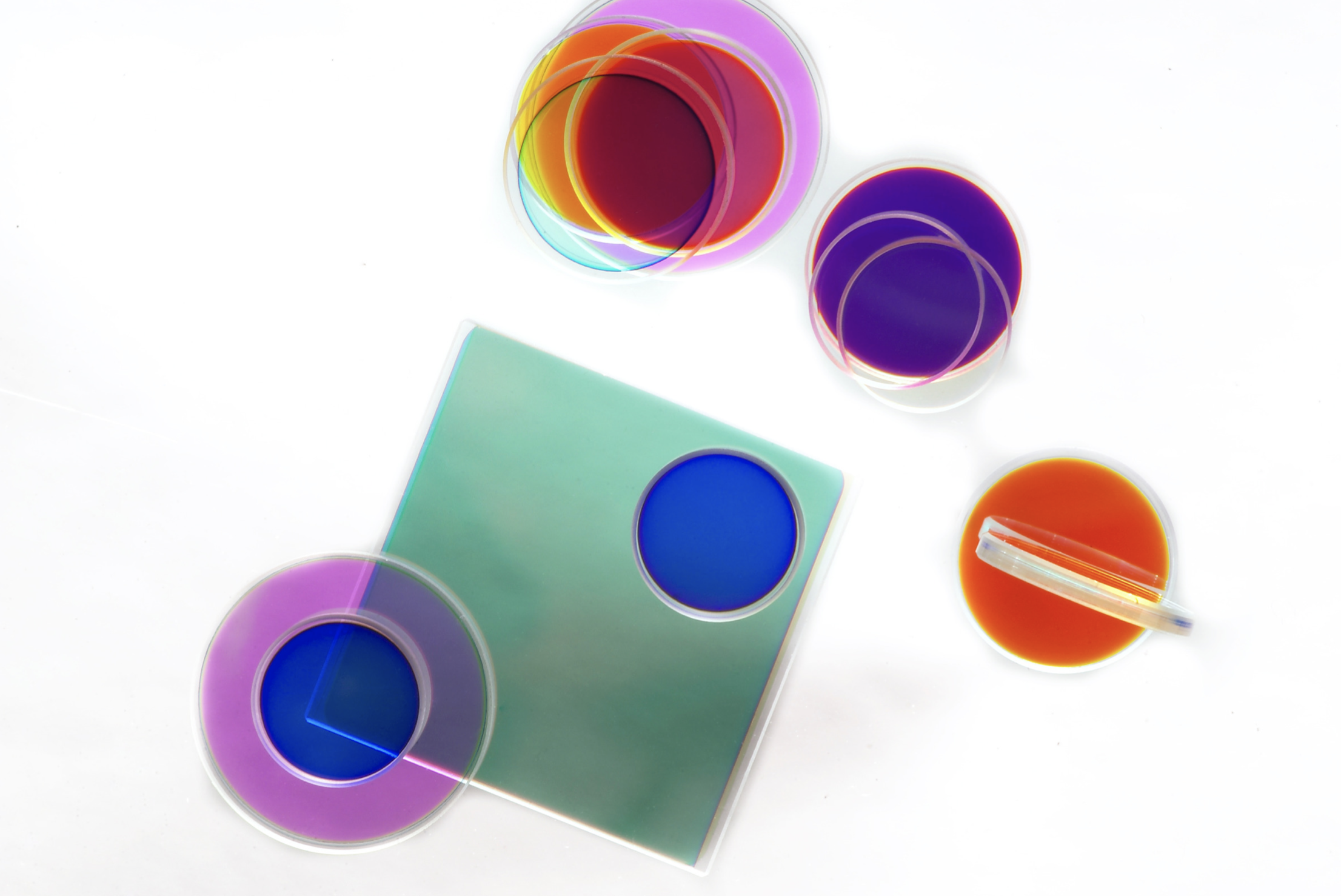
Most Common Optical Filters and Their Uses
There are many types of common optical filters used in everyday life, from UV filters to coloured lenses for lights and cameras.
Some have very specific scientific applications, while others are purely aesthetic. In this article, we’ll look at some of the most common optical filters and what they are used for.
Optical thin-film filters
Optical thin-film filters use a very thin film coating applied to a substrate to give it a specific wavelength profile. Examples include:
Anti-reflection coatings
Used to prevent reflections and glare from glass and other reflective surfaces, including window glass and all kinds of lenses.
Bandpass filters
Allow only a specific frequency range to pass through the filter, for example, a particular colour of visible light, or to trim infrared and ultraviolet from the spectrum.
Beam splitters
A way to split a beam into two or more outputs, with a specific range of wavelengths of light in each output beam.
Longwave pass/shortwave pass
Similar to bandpass filters but focused specifically at long/short wavelengths. May be used to eliminate unwanted frequencies from optical signals and in imaging applications.
Spectral and absorption filters
Absorption filters are made using materials that absorb specific frequencies of light, effectively blocking those wavelengths from appearing in the resultant output beam.
Multiple filters may be laminated onto a single substrate, allowing complex spectral properties to be created. Applications include:
Neutral density
Attenuates a light signal uniformly, without favouring one or more frequencies. Useful for shielding sensitive equipment against powerful signals, as well as to protect human eyesight.
UV bandpass
Block visible and IR light to ensure only UV wavelengths are transmitted to equipment that requires a ‘clean’ UV signal for imaging purposes.
Visible light bandpass
Similar to the optical thin-film filters mentioned above, and used to pass safe and desirable visible light while blocking unwanted or harmful UV/IR frequencies.
Complex and custom filters
Some of the most specific uses for optical filters are achieved by combining substrates with specific optical properties, with thin-film coatings and absorption filters layered and laminated on top.
The shape of the substrate can also affect properties like focal length, convergence and divergence of the output beam.
For more information about how Envin Scientific can manufacture bespoke optical filters for all kinds of niche applications, contact us today and talk to one of our specialists.

